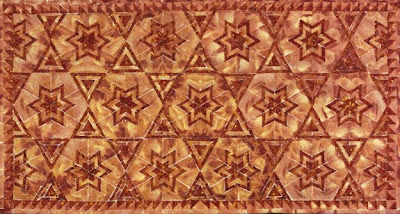Wim Delvoye (b. 1965): Post Po-Mo Punk

Caterpillar Scale Model, 2002

Cement Mixer, 2007

Cement Truck, 1999

Concrete Mixer, 1992

Kiss 3, 2000

Kiss 2, 2001

Garbage, 2000

Waited Till 9, 2000

Tatooed Pigs, 2006

Tatooed Pigs, 2006

Cloaca (Kunsthalle Vienna), 2001

Cloaca (The Power Plant, Toronto), 2004

Birdhouse #1, 1998

Marble Floor #111, 1999

Gas Canisters, 1998

Coke Canisters, 2002

Chapel, 2006

Chapel, 2006
Art has absolutely no existence as veracity, as truth.
In my day artists wanted to be outcasts, pariahs. Now they are all integrated into society.
I thought to discourage aesthetics . . . I threw the bottlerack and the urinal in their faces and now they admire them for their aesthetic beauty.
I don't believe in art. I believe in artists.
Aesthetic delectation is the danger to be avoided.
I've decided that art is a habit-forming drug. That's all it is, for the artist, for the collector, for anybody connected with it.
It's true, of course, humor is very important in my life, as you know. That's the only reason for living, in fact.
I was interested in ideas, not in visual products. I wanted to put painting again in the service of the mind.
The individual, man as a man, man as a brain, if you like, interests me more than what he makes, because I've noticed that most artists only repeat themselves.
All his decisions in the artistic execution of the work rest with pure intuition and cannot be translated into a self-analysis.
The life of an artist is like the life of a monk, a lewd monk if you like, very Rabelaisian. It is an ordination.
The creative act is not formed by the artist alone; the spectator brings the work in contact with the external world by deciphering and interpreting its inner qualifications and thus adds his contribution to the creative act.
It is the spectators who make the pictures.
I force myself to contradict myself, so as to avoid conforming to my own taste.
Art is an outlet toward regions which are not ruled by time and space.
The word 'art' interests me very much. If it comes from Sanskrit, as I've heard, it signifies 'making'.
Living is more a question of what one spends than what one makes.
Unless a picture shocks, it is nothing.
In my day artists wanted to be outcasts, pariahs. Now they are all integrated into society.
I thought to discourage aesthetics . . . I threw the bottlerack and the urinal in their faces and now they admire them for their aesthetic beauty.
I don't believe in art. I believe in artists.
Aesthetic delectation is the danger to be avoided.
I've decided that art is a habit-forming drug. That's all it is, for the artist, for the collector, for anybody connected with it.
It's true, of course, humor is very important in my life, as you know. That's the only reason for living, in fact.
I was interested in ideas, not in visual products. I wanted to put painting again in the service of the mind.
The individual, man as a man, man as a brain, if you like, interests me more than what he makes, because I've noticed that most artists only repeat themselves.
All his decisions in the artistic execution of the work rest with pure intuition and cannot be translated into a self-analysis.
The life of an artist is like the life of a monk, a lewd monk if you like, very Rabelaisian. It is an ordination.
The creative act is not formed by the artist alone; the spectator brings the work in contact with the external world by deciphering and interpreting its inner qualifications and thus adds his contribution to the creative act.
It is the spectators who make the pictures.
I force myself to contradict myself, so as to avoid conforming to my own taste.
Art is an outlet toward regions which are not ruled by time and space.
The word 'art' interests me very much. If it comes from Sanskrit, as I've heard, it signifies 'making'.
Living is more a question of what one spends than what one makes.
Unless a picture shocks, it is nothing.
Marcel Duchamp
+-.jpg)
